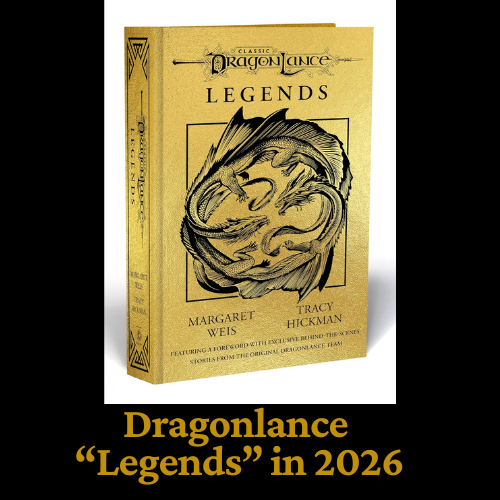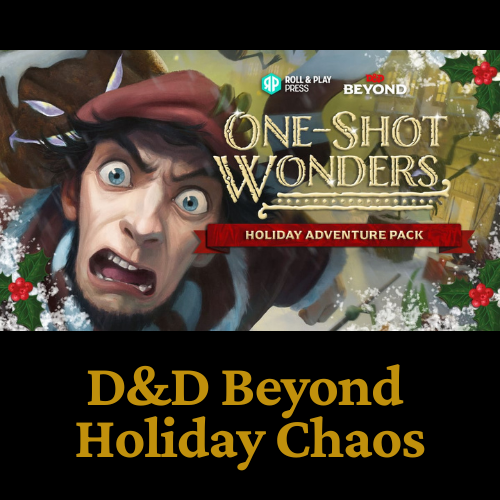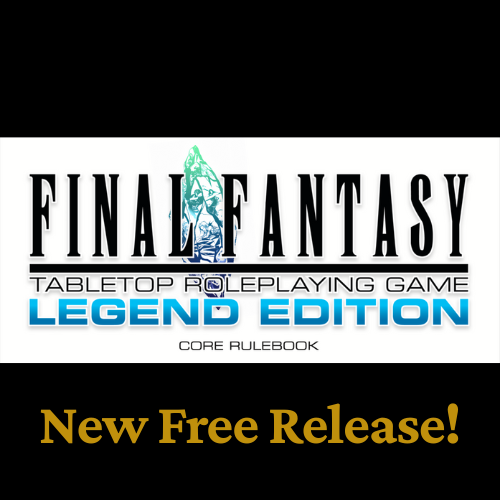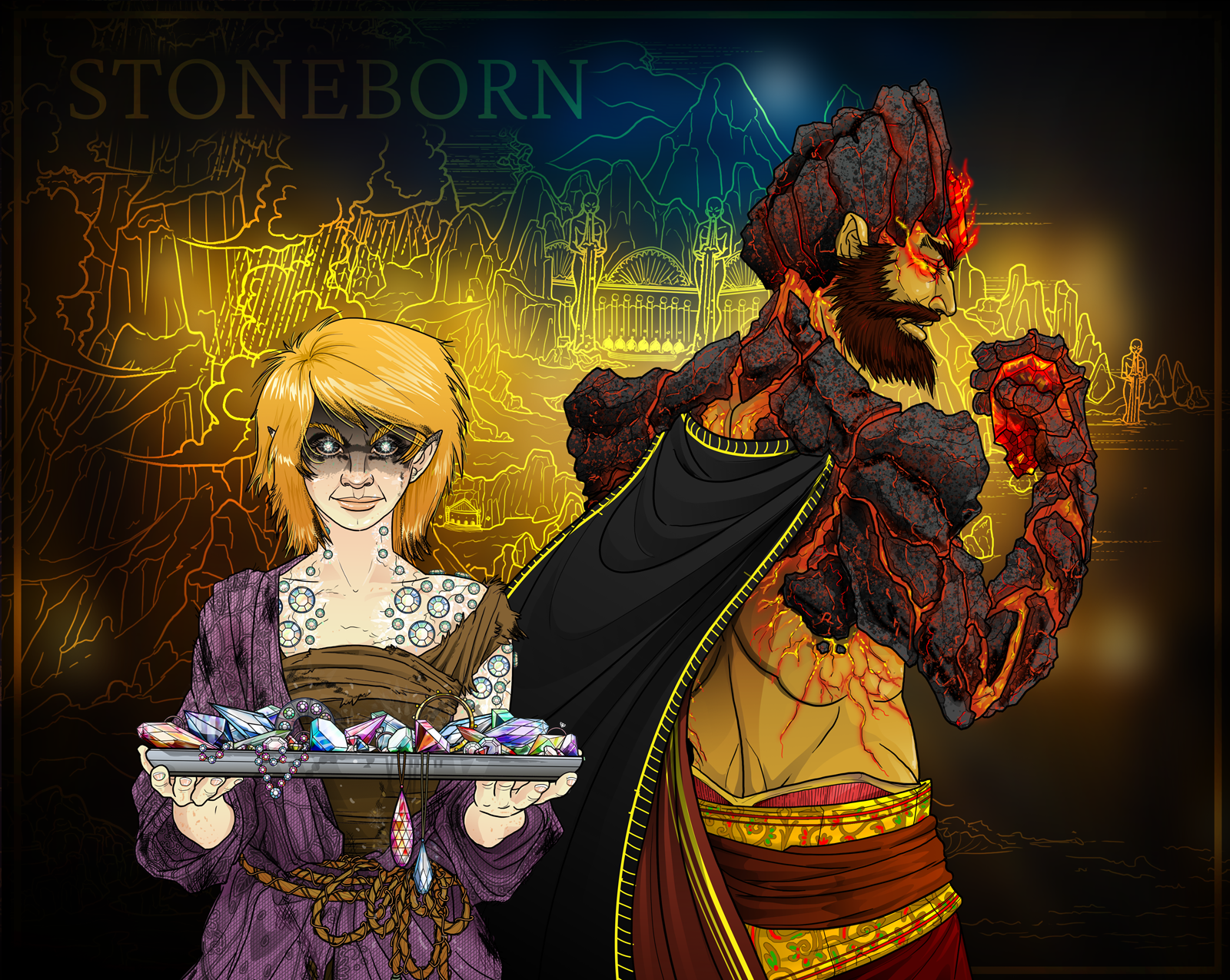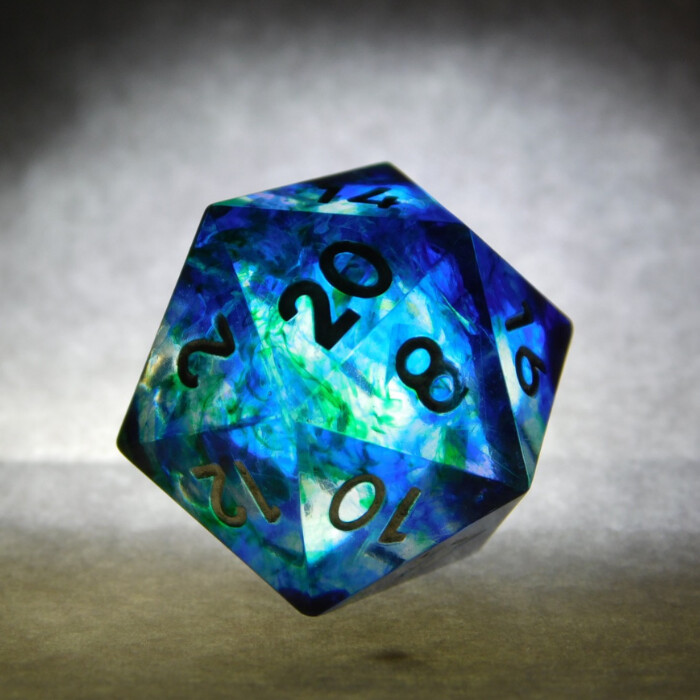How To Write a D&D Campaign
It can be easy to get overwhelmed when writing a D&D campaign. Where do you start? What should your campaign be about? How to write a D&D campaign that's original and exciting?
Don’t worry. This article is here to help. Read on for tips and tricks on how to write a D&D campaign that you and your friends will remember for years.
Where Should You Begin?
The truth is that you can begin writing your D&D campaign from any point. I usually begin with my campaign creation from a point of inspiration or passion around something I want to tell in an epic story. I cover all of the main parts of D&D campaign creation below, but just know that you can more or less start at the point that feels right to you, then come back and fill in other details later.
How to Write a D&D Campaign – Major Elements
Overarching Story
Every D&D campaign needs some kind of centralizing idea, theme, or storyline.
Campaign World
Writing a D&D campaign means coming up with interesting locations where the story takes place.
Quests, Adventures, and Encounters
Stories need chapters, and individual events in those chapters. Adventures are your game's action.
Interesting Characters
Players need NPCs (non-player characters) to interact with. Good NPCs greatly liven D&D campaigns.
Each of the above major story elements must be filled out in some detail before a "finished" D&D campaign can be produced. Of course, remember that D&D (and any TTRPG, for that matter) is definitely a game of improvisation. Even when you have everything planned and ready for your new, brilliant D&D campaign, nothing guarantees that your gaming group will follow your story.
I've always enjoyed creating detailed RPG campaign notes, and feel that thorough preparation truly does make for better campaigns. However, it is also worth mentioning that even if you only make the loosest of general plans for your campaign, you can be successful as a dungeon master. Simply pay attention to what your party wants in a game, how they play their characters, take note of their interests, and build on things from there.
You can also reference my article on How to Start a DnD Campaign if you need help not only with campaign creation, but also with overall campaign setup and group-building.

How to Create an Overarching Story for Your Campaign
The overarching story for your campaign can happen either by plan, organically as the campaign progresses, or through a mixture of both. When it comes time to create a new TTRPG campaign, I often start by answering the question of "What is the campaign about?" What makes the campaign interesting and pulls players in, generating action and drama?
Oftentimes, if you can find a compelling central storyline for your D&D campaign, you can then often add to plot, embellish the story, and find a thousand ways to expand your ideas. You may also find that your original overarching idea either fades or adjusts, as your players provide feedback via their character's actions.
Stay flexible, stay engaged with your players, and keep things simple. Try out some of the important story-building concepts below as a beginning point for your story creation. And for some extra help, take a look at my article on 3 Full-Length D&D Campaign Ideas for Your Next Ongoing Adventure.
Campaign Themes
D&D campaign themes provide central ideas, feelings, and vibes to your game. Once you have a theme, you can always think about new ideas, adventures, characters, and so on in the light of that theme. Themes help you create campaigns that are not only full of interesting encounters, but that fit together holistically.
A theme can be anything from “the chosen one must save the world,” to “a heist gone wrong.” It’s up to you, as the dungeon master, to come up with a theme that your players will find intriguing. Oftentimes, your best bet at creating an interesting theme will stem from an idea that you, yourself find intriguing. If you're creating a gaming world that you would love to explore, yourself, then you're well on your way.
Major Story Elements
I often begin my campaign theme brainstorming session by writing down ideas for one or multiple (often, multiple) of the following major story elements:
- Event: something substantial that’s currently happening in the game world, or has happened in its past.
- Item: an item or trinket of your own creation. This doesn’t have to be in the game's core rulebook.
- NPC/ Villain: non-playable character. Someone influential or meaningful to the world.
- Organization/ Nation: societies, countries, guilds, coalitions, etc.
- Town/ Zone: places friendly or unfriendly to the players. Locations, geographical features, etc.
Note that this little bit of brainstorming may take you away from what seems like the central storyline of the campaign world. You are, after all, already dipping into the campaign's world, potential adventures, and NPCs. However, your task at this point is to 1) follow any cool ideas that come your way, and 2) think about these primary elements from the point of view of a central storyline.
For example, how could some event that's recently happened in the world be central to what you want your players to experience in the campaign? Could they find an item that is so powerful and influential that the entire campaign world is at ill ease from it (Lord of the Rings). Is there some organization that has an important goal in mind that may end up harming the players or the people they love, if something isn't done?
The options are truly endless.
Use Major Story Elements to Create Campaign Themes
Campaign themes make for better games. Use the story element(s) you create to think about how that story can be shown through virtually every piece of your campaign. If you use themes, you never need to railroad players in order to have them experience the game you've created. They kill an important NPC to your story? No problem. Make that NPC only one of many that represents the theme you're after.
You can represent a campaign's theme or central story through simple descriptions of towns and cities. Implement your theme in the way that NPCs talk, and interact with the party. Definitely make themes color items, monsters, and locations your party comes across.
If you need a great example, think about
Diablo II. No matter what the player does in Diablo II, they cannot escape the fact that it's Diablo. Even if they killed important NPCs or somehow ruined important storylines, they still would be firmly set in a heavily-themed game that's sure to pull player interest.
Eternity TTRPG Top Sellers
How to Create a Campaign World
One of the most important aspects of writing a successful D&D campaign is to build a believable and compelling world for your players to explore. The best campaigns are those where the setting feels like a living, breathing place with a rich history, and well-developed culture. If you have an interesting, vibrant world in which your game takes place, then quests, encounters, and storylines often take care of themselves.
If you’re starting from scratch, the task can feel daunting – especially if you've never done so, before. I personally love the task of world-building, and find the freedom to create literally anything I want very enjoyable.
If you want some help on world creation, there is plenty of pre-made material available to you. There are many very talented world-builders who provide either free or paid campaign worlds you can use. The best part is that you can either also use some of the adventures and overarching storylines that often come with pre-made worlds, or you can just pick and choose your favorite things, to add into your own custom campaign.
If you are set on building on your campaign world, here are the most important world-building components that can help you create a believable, magical, and detail-rich world.
Campaign Worlds Should Provide:
To keep things simple, remember the following 3-key points when creating your campaign's world:
- Believability/ relatability to the real world
- Details and depth
- Enough magic/ sense of wonder to grab your players' attention
Do that, and you're likely to create a strong start for your campaign.
Examples of How Your Campaign World Can Make Adventure-Creation Easy
Consider two different settings and how they might inform your game's overall adventures. Hint: one of these settings creates an organically more interesting campaign than the other:
- The players start out their adventure in a tavern, in a sort of average town. The tavern is filled with ordinary people, and the countryside around them is sort of vague, and also ordinary. The world at-large is a typical medieval fantasy setting.
- The campaign world is a series of floating islands, each no larger than several miles in diameter. Below, nothing but empty sky with purple and gold clouds meets the party's eye, with occasional cracks of lightning in the far depths.
With the first of these two examples, you'll have to work pretty hard to create interesting stories in order to keep players interested in such a mundane world. Alternatively, with the second example, you already have major questions grabbing the players' interest. They'll want to know how such a world came to be. Why are the clouds far below them, and why do they feature such interesting colors? Do people live below the clouds, etc? All these questions can serve as starting points for great adventures.
Of course, you don't need to be extreme with your campaign world, and a mundane setting doesn't mean that the story itself will be mundane. Just keep in mind that how you describe the campaign world to your players will greatly inform how they think of the world.
Create a Town
Create a town for your players to start their adventure. The campaign doesn't have to "begin" literally in this town, but it does need to be the "home base" that players will use at the start of the campaign. This is where they will go to rest, resupply, and gather information about their next quest.
When creating your town, there are a few things you need to keep in mind.
- Decide what kind of town it is: small village or a bustling metropolis? The size and type of town will determine the available amenities and services.
- Decide the town’s primary industry. This will help determine the types of shops and businesses within the city.
- Create a few NPCs with which the players can interact. These could be shopkeepers, innkeepers, or quest givers.
- Decide what atmosphere you want your town to have. Is it a friendly and welcoming place, or is it more dangerous and seedy?
Begin by describing the town’s layout and the different shops and businesses that can be found there. Then, fill in the details about the NPCs that the players will meet. Once you have this home base created, you can fit it into your larger campaign world in which players will leave to test their skills, and adventure.
Draw An Overland Map
Even if you have zero skills in drawing creating an overland map can be really helpful, and really fun. This map can be an overview of the entire campaign world, a single continent, a single kingdom, or even smaller. I often start quite small with maps I create, and work outward as players explore more of the world around them. Alternatively, you can start big with a map of the entire world, and create more details in each locale as players head there.
You can also find a map from great map content creators from online communities like the D&D Maps Reddit.
The entire idea behind your overland map is to build structure into the campaign world you're creating.
Add Features, Landmarks, and Unique Environments
Once you have your overland map, you can start adding features, landmarks, and unique environments. This will help bring your world to life and make it more accessible to your players. Again, these map elements can be thoroughly detailed with stories and lore attached to them. Or, they can just be quick sketches that give you clues as to how you might proceed if the party explores more closely.
As far as terrain, think about adding diversity to your world:
- Mountains
- Forests
- Deserts
- Swamps
- Rivers
- Lakes
Once you have large areas developed, you can think about where cities, towns, garrisons, and more might go:
- Cities often need some source of water to realistically develop.
- Small settlements may indeed venture near difficult climates.
- Large cities often need many smaller towns around them, to supply resources and food.
- You can also think about how magical environments/ locales might affect local populations.
- Also consider how monsters and "the wilds" play into your world.
Consider History, Cultures, and Religion
Finally, to create a compelling campaign world, think about your world's history, cultures, and religion. This will help make your world feel richer and more believable. Come up with enough detail that players can learn about cultures in your world and how they interact with each other. Again, the more work you put into this aspect of your campaign, the easier it will be to create unique and exciting adventures, later.
Some things you might want to include in this aspect of your world-building are:
- Deities
- Language
- Customs
- Government
- Education
Take your time, and don’t be afraid to experiment. The most important thing is that you have fun creating your campaign setting. If you can't come up with anything terribly unique on any of these points, don't sweat it. You may find that your campaign takes off in other areas, if this one isn't for you.
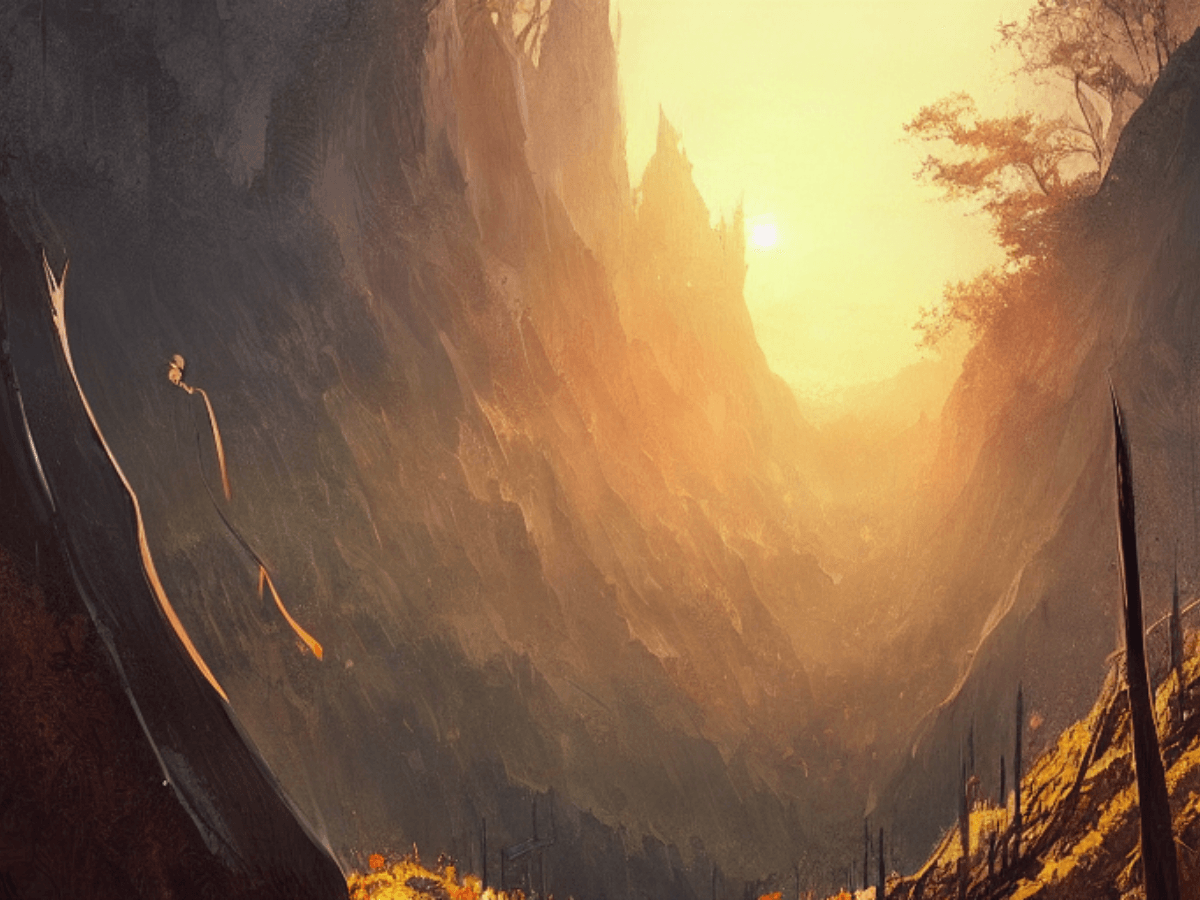
How to Create Quests, Adventures, and Encounters
Quests, adventures, and encounters are the actual "scenes" of play in D&D, and the means by which you provide structure when creating your campaign. Keeping players engaged through every step of your campaign creates fulfilling gaming experiences. Excellent encounter and adventure design, in particular, makes up for a lack in almost any other area of dungeon mastering.
Organize Your Dungeon Mastering
Want to be a great dungeon master and run campaigns that your players will love? Get organized. If you don't have one yet, get yourself a DnD Campaign Planner. You should also take a look at the many Dungeon Master Tools available to you that can also help with this very purpose.
Why mention organization in the context of quests, adventures, and encounters? Well, here are some fantastic reasons:
- Encounters are the basic steps to your game. If you take notes on these, you can easily string together complex plots.
- Adventures are literally made of individual encounters. By keeping these organized, you keep your adventure coherent and clear.
- Quests are like the chapters of a book, and are comprised of your adventures. If these don't line up in a thoughtful way, your campaign will lose sight of its central theme(s), and will lose power and momentum over time.
- If you take notes on player thoughts and actions during each session, you'll never run out of unique and exciting ideas for your upcoming sessions. Pay particular attention to how they respond to your encounters, adventures, and quests.
Create a Premise
Much in the way that your entire campaign should have some kind of centralizing theme(s), it's extremely beneficial to have a centralizing theme or premise for each encounter, adventure, and quest. Your campaign theme can inform your quests, adventures, and encounters, too - which is why I normally start there.
In any case, a D&D campaign is not your average story. You can’t simply write a linear plot because your players have agency, and their choices affect the story’s outcome. The premise provides you with a place to fall back when players cause your plans to go awry.
The premise answers the question of "what is this adventure about?" Your premise can be composed of any or all of the following elements, or anything else you can come up with:
- A problem that the players need to solve.
- An important place that you want to share with your players.
- Villainous plots unfold before the party.
- Allies offer to join the party.
- An important magical item is sought after by multiple competing groups.
For ideas on adventure premise, take a look at these 20 Amazing DnD Quest Ideas and this Ultimate Free DnD One Shots Guide.
Adventure Location
In the same way that your campaign world creation generates player interest, so too does adventure location. Whenever you're playing D&D, try to skip the boring stuff. When I say skip it, I mean just literally skip it entirely. You only have a few hours to play each week, right? Or a few hours each month, if your group only meets that often. So, skip the boring stuff.
With every moment you get as a dungeon master, play up the sense of awe, wonder, and magic as much as possible. It's almost impossible to go into the realm of "too much" when playing D&D. Just give it a shot, starting with adventure locations, and see what an impact it has on your players.
When writing your adventure locations, it’s essential to be creative and have fun. The more unique and interesting your sites are, the more enjoyable they’ll be for your players.
For your adventure locations, think about the following kinds of dramatic and magical places:
- Dungeons where demons have been summoned
- Ruined castles filled with ancient relics
- Abandoned mines filled with chaos-infused monsters
- Enchanted forests of the true fey
- Frozen tundras where men are called as if by sirens
- Lava-filled volcanoes about to explode
The possibilities are endless. The key is to ensure that each location is interesting and provides a challenge for the players.
When creating an adventure location, there are a few things you need to keep in mind:
- Write out location details, including overall layout, traps, and puzzles that players need to overcome.
- Design monsters that inhabit the space. Be sure to create battles appropriate for the level of the players.
- Add treasures or rewards for the players to gain. Gold works great, but so do unique finds such as gems, magical weapons, or ancient armor.
If you're specifically looking for ideas when it comes to dungeons, take a look at my Dungeon a Day page. There, you can find a near-endless supply of dungeon encounters, adventure ideas, and story premises.
Give Your Players the Feeling of Control
Let your players make decisions that affect the story’s outcome. Never think that as the DM, you have total control. If you let your players take the story away from your pre-planned adventure, they will enjoy the campaign more. The key is to also not let your players completely de-rail your ideas, or they could turn your "campaign" into one joke session after another.
To make a campaign truly great, thoroughly prepare your encounters and adventures. Then, when players want to take things a different direction, let them. You then simply repurpose your plans to fit what they wanted to do in the campaign. In doing so, you give them a sense of control over their characters' journey, while also playing out your master ideas.
Let your players think that they determine what happens next, and they’ll feel like they have a stake in the outcome.
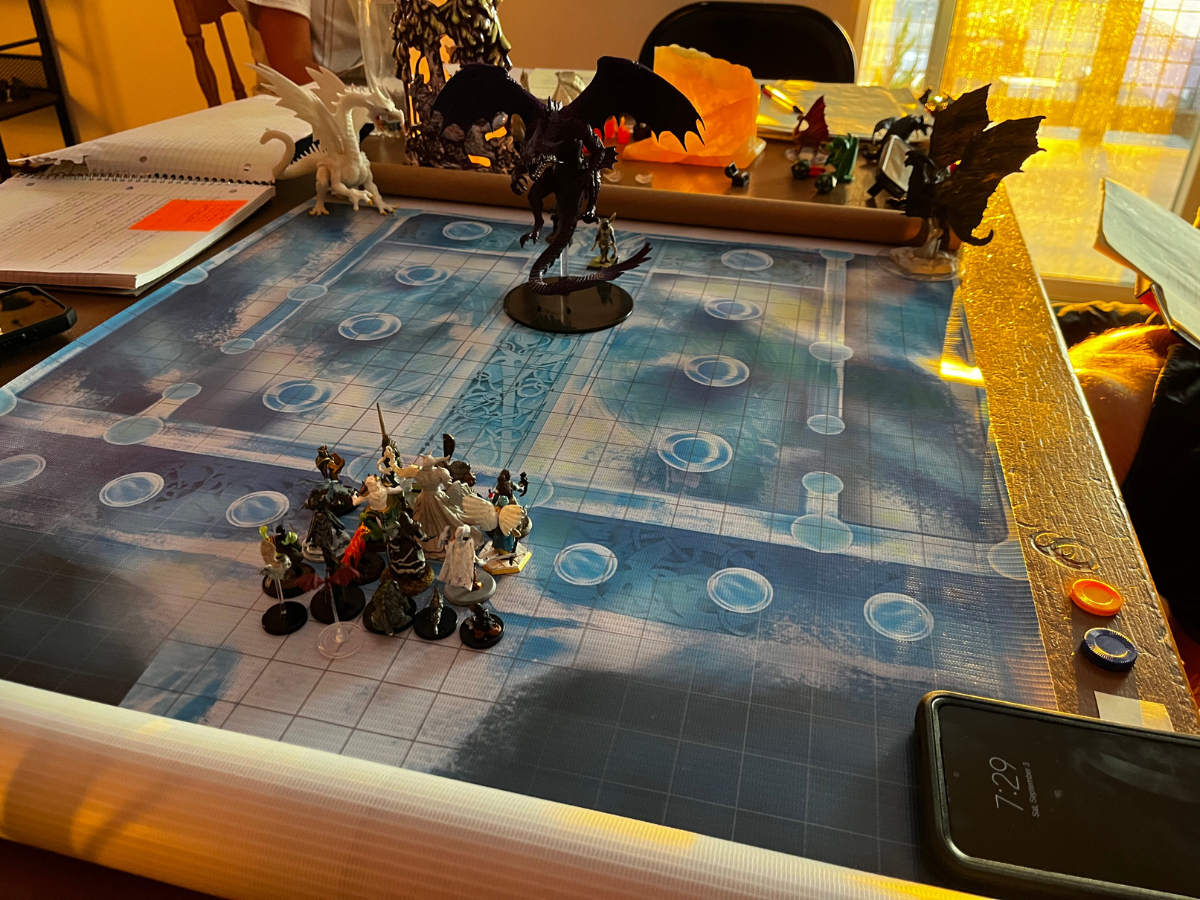
Creating Individual Encounters
Once you have a picture of your desired quests and adventures at the large-scale, it's time to dive into specifics. Your encounter design as a DM will make or break your entire campaign. So, no pressure. But make sure to thoroughly prepare this part. Encounters in D&D are broken down into 3 categories: combat, exploration, and roleplaying. Every type of encounter you create will basically have one of these elements at its core.
Think of these three types of encounters as the foundation of your campaign. Build up your skills in this area and you're almost guaranteed to up your dungeon mastering game.
Combat
D&D is, at its heart, a combat game. Not everyone builds a ton of combat into their D&D campaign, and combat isn't even essential to a campaign. However, just look at the D&D core rulebooks and you'll notice how many pages are devoted to stats, spells, abilities, magic items, and other combat-related elements.
I have played campaigns devoid, or at least very light, on combat. However, I recommend that you plan in some action-packed fights to your adventures. Most players will expect the chance to fight monsters and villains, too, after all.
My number one rule of combat is that is should further the plot, or some character's development. Combat should always be a means to an end. It should never feel like it’s just there for the sake of being there. Very few players enjoy pointless battles, as they tend to feel slow-paced. If you want your battles to grab your players' attention, always give an important reason for the battle to take place, and always add in more drama.
Combat Tips
To maximize every combat encounter, try to add in the following elements:
- Use combat as a way to unravel tension in the campaign and move the story forward.
- Try to give players ways of "winning" the encounter that isn't just "kill all the enemies." Give them objectives, such as defending a key person, reaching a specific point on the map, or obtaining a magical item.
- Throw in the unexpected. Try to provide some unique environmental or magical effect to each fight. In the way that your goal is to provide the magical and awe-inspiring in worlds you create, do the same in combat encounters.
- Choose monsters that players have never seen before. For example, try
Mordenkainen's Monsters of the Multiverse to show your players something truly unique.
- Make every combat encounter either life-or-death difficult, or very easy. Difficult fights are always interesting. Easy fights show the players how strong they've become with the levels they've gained.
- Avoid medium-difficulty fights as they tend to feel less meaningful. Only do so if you need to for variety sake.
- Insist that players keep the pace of combat very fast. Don't let them take a long time to decide what to do on their turn. Try a 5-second rule if players are being slow. This is combat after all! Make the players feel like something's at stake.
- If a fight is dragging on, just end it. Don't make players wait through 45-minutes of mid-tier excitement.
- Along the same lines, have your players stand up when it comes time to roll for initiative. Give them the sense that combat is dangerous and important. It may seem unnecessary, but getting people to stand up really does change the game's vibe.
- Use an online initiative tracker. This kind of online tool can help improve the pacing of combat.
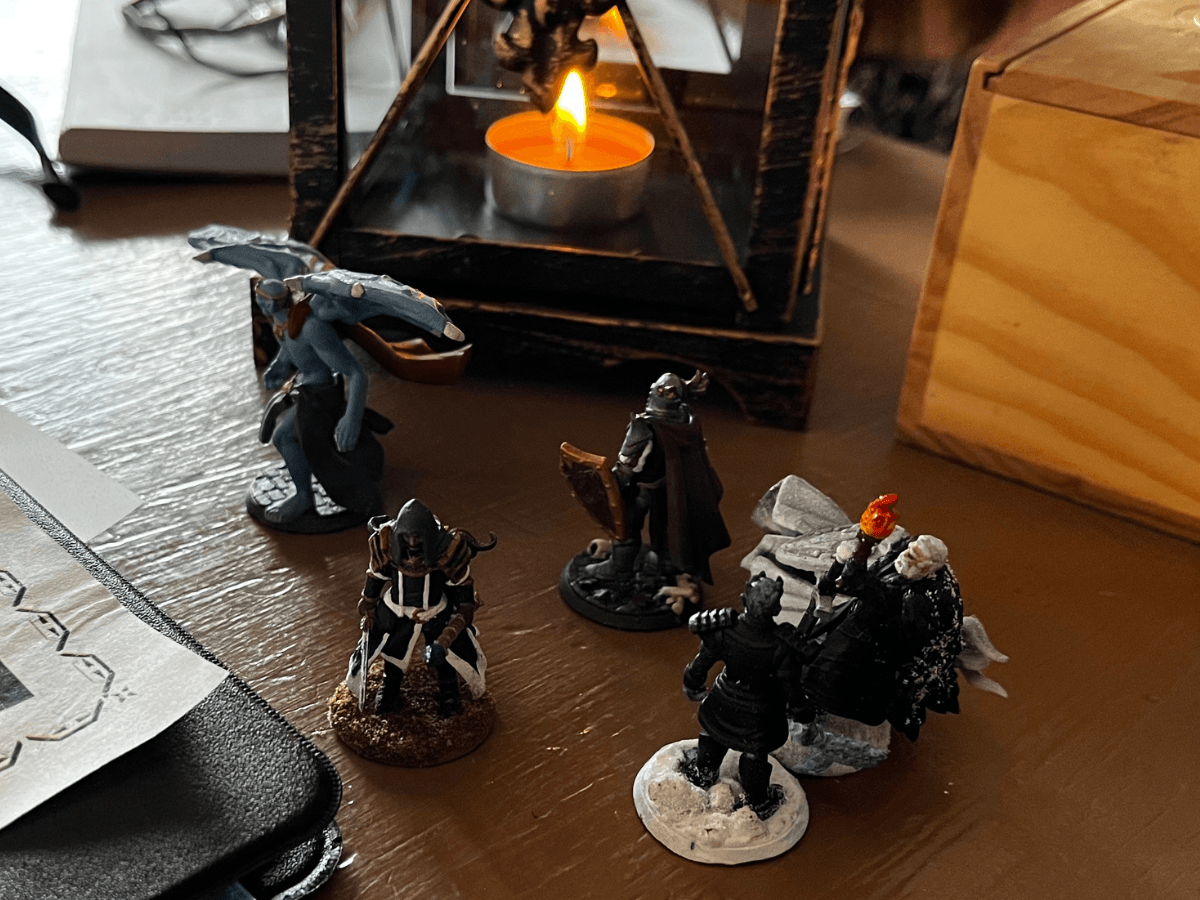
Exploration
D&D is all about going on adventures. And what’s an adventure without exploring? When your players are invested in your game world, they should feel like they’re discovering something new. Even if it’s just a tiny detail, like a secret door hidden behind a bookshelf, it gives them a sense of accomplishment.
One of the best ways to encourage exploration is to have a lot of D&D plot hooks. A plot hook gives the players a reason to go somewhere or do something. It can be as simple as “You hear rumors of a lost city in the desert” or “A dragon has been seen flying overhead.”
The key is to ensure plenty of plot hooks are scattered throughout your campaign world. That way, no matter where the players go, they’ll always have something to do. And if you’re really stuck, you can always fall back on the classic “dungeon crawl.”
But a word of caution: don’t make your players feel like they HAVE to explore every nook and cranny. If they want to skip the side quest and go straight for the main objective, let them. The last thing you want is for your players to feel like they’re on a railroading adventure.
Exploration Tips
Exploration comes in many forms. Try out some of the following ideas to give your players a sense that they're gaming in a real, living and breathing world:
- Make liberal use of those small details. Have plenty of small artifacts in dungeons. Draw players' attention to the ornate comb in the corner of the noble's room. Point out how the local guard's sword is heavily dented.
- Provide places where players can seek out adventure. You never know how a small detail you create without much thought could provide you a basis for a lengthy adventure.
- Don't worry if someone passes on one of your hints for an exploration hook. Anything you create can be repurposed later, in another exploration plot hook.
- Remember that "side quests" can actually form new entire segments of your campaign. Let players decide what they're interested in when it comes to your game. If they love your story, great. If not, let them tell you where to go next.
- Puzzles and mysteries are a form of "exploration" that many players love. Throw in plot twists and unexpected events, and you'll give players even more reason to explore your world.
- Fall back to the overland map or world concepts you created. Is there some part of the map that players haven't yet explored? What could be present there that stands out quite a bit from what you've already shown them?
Roleplaying and Social Interaction
Some players love to roleplay. Others don't so much. However, I've noticed that nearly all players enjoy at least some roleplaying moments, if they're meaningful and move the story forward. Roleplaying is, after all, where characters come alive.
Players get out of D&D what they put into it. Make sure your players understand that if they give effort to the campaign and the way they interact with the world, they'll be more likely to genuinely enjoy the experience. As such, encourage players to build a character with a real personality, motivations, fears, and connections to other people in the game's world.
One of the best ways to encourage roleplaying is to give your players plenty of opportunities to interact with each other. Get them talking to each other. Have them share the personality traits and motives that they've created. Also, have them help each other with adventures specifically meaningful to their individual characters' stories.
Of course, any interactions that the party have can also be shared, or mirrored with NPCs. Non-playable characters are often the lifeblood of any campaign. NPCs can give players quests, sell them weapons, offer them advice, and provide much-needed rest between expeditions. But more than that, NPCs are a chance for you to show off your story-building skills. You can bring a campaign to life with well-written NPCs. So take your time and make them count.
The key is ensuring your NPCs are more than just talking heads. They should be fully fleshed-out characters in their own right. The more interesting they are, the more your players want to speak to them.
Roleplaying Tips
Make the most out of every roleplay encounter and you'll be certain to heighten the experience players have with your combat and exploration encounters:
- As with everything else when it comes to writing a D&D campaign, make your roleplay encounters meaningful. Don't worry about haggling over the price of a weapon in a shop. Instead, have the shop owner provide the weapon, and a enemy to use it against.
- Be sure that your NPCs have motives of their own. Do this, and NPCs can betray the party, help them in unexpected ways, or otherwise provide meaningful flavor.
- Ask players questions at the start of every session that help them develop their characters. Pick 1-2 good questions that are specific to their goals, personality, or even their character's thoughts about what's happening in the campaign's story.
- Have players write you some backstory on their characters. Doing so will not only help you create interesting NPC roleplay encounters, but will help them better develop their own character's roleplaying.
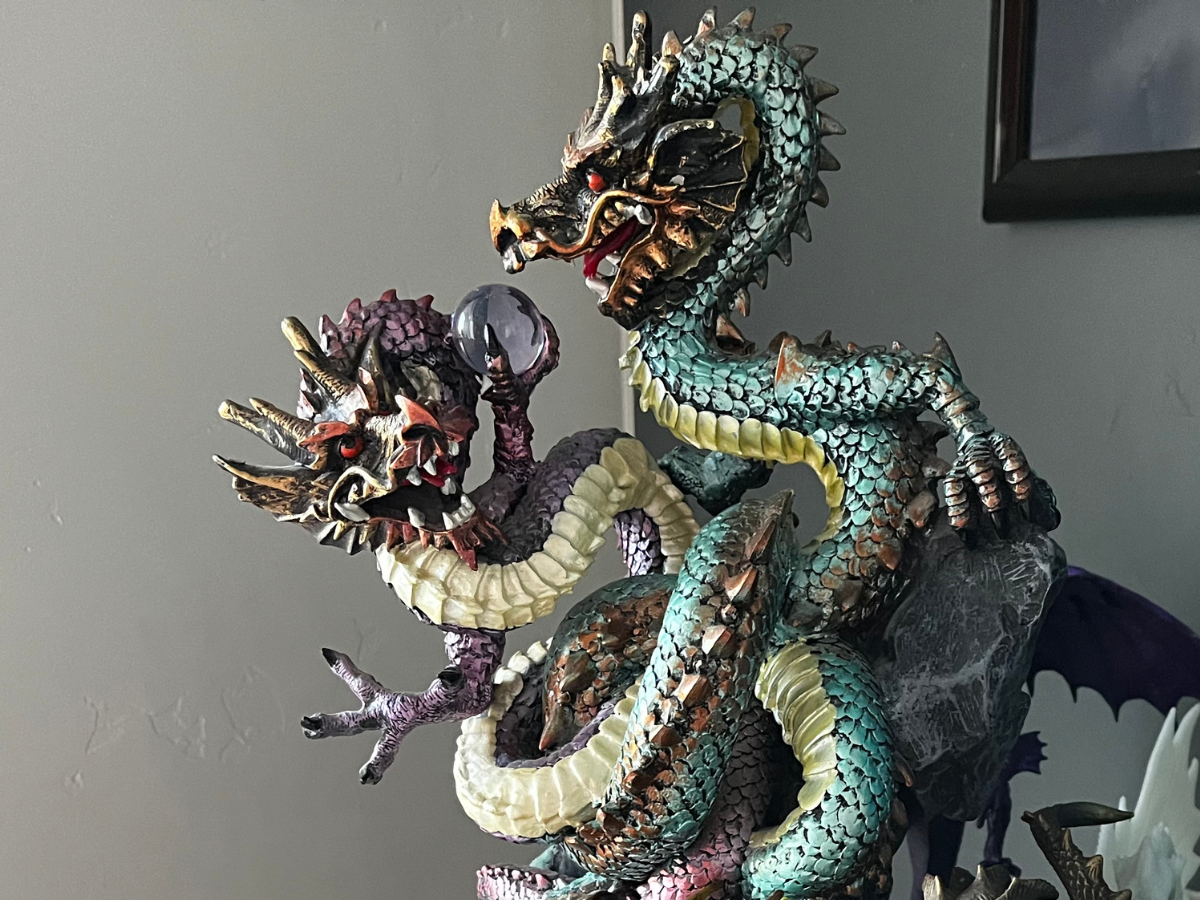
Populate Your World With Interesting Characters
Another important aspect of writing a successful D&D campaign is populating your world with exciting characters. No one likes generic NPCs. So , take the time to create a diverse cast of characters that your players will remember long after the campaign is finished.
My own players fondly remember "Saint Ranroth the Sunblade" who betrayed the Eternals by destroying the tree of life. He was a pathological liar, who always seemed like he was maybe on the players' side, even while thwarting some of their largest plans. Each session, he could be a tremendous ally, or a terrifying adversary. The players love-hated him, which created a tremendous amount of drama and excitement for the overarching story.
Interesting characters fuel your roleplay encounters more than anything else. However, they also fuel both your exploration encounters and combat encounters, as they provide meaningful reasons for events in your campaign to take place.
Non-Player Characters
NPCs further the plot, provide exposition, and give players someone to interact with other than the monsters they’re trying to kill. Consider using the following DnD Character Ideas to make your process of creating NPCs much faster.
- Every NPC should serve a specific purpose in your campaign. Make sure that the purpose is clear to you, even if it isn't to the players, as they can discover the purpose over time.
- Give them a stand-out personality. When writing an NPC’s personality, think about what makes them unique and interesting. The more personality you can give your NPC, the more memorable it will be.
- What are their quirks?
- Do they have any catchphrases?
- Are they always serious, or do they have a sense of humor?
- What's they're background, and how does that inform their place in the campaign world, currently?
Villains
No D&D campaign is complete without a compelling villain. By making them unique and interesting, you can keep your players hooked for the entire campaign. Here are a few tips on how to write a D&D villain that will keep your players coming back for more:
- Make sure your villain is visually distinct. Describe their appearance in a way that is both striking and unique.
- Give your villain a name that is just as distinct as their appearance. A good villain name should be evocative and help to establish their identity further. Avoid using generic titles like “the orc chieftain” or “the goblin king.” Instead, develop something specific to your villain and indicative of their personality. For example, the orc chieftain could be named “Gruumsh the One-Eye,” or the goblin king could be called “Skurge the Flesh Eater.”
- Give your villain a clear motive. Players need to understand what the villain wants to feel invested in the conflict. Is the villain trying to conquer a kingdom? Kidnap a princess? Destroy a magical artifact? Their motive must be something the players can get behind, even if they disagree with it.
- Make sure your villain has a unique fighting style. This is another critical way to make your villain stand out. When designing your villain’s fighting style, think about what would make them a challenging and memorable opponent. The villain should also have access to unique abilities or items that will help to further distinguish them for years to come.
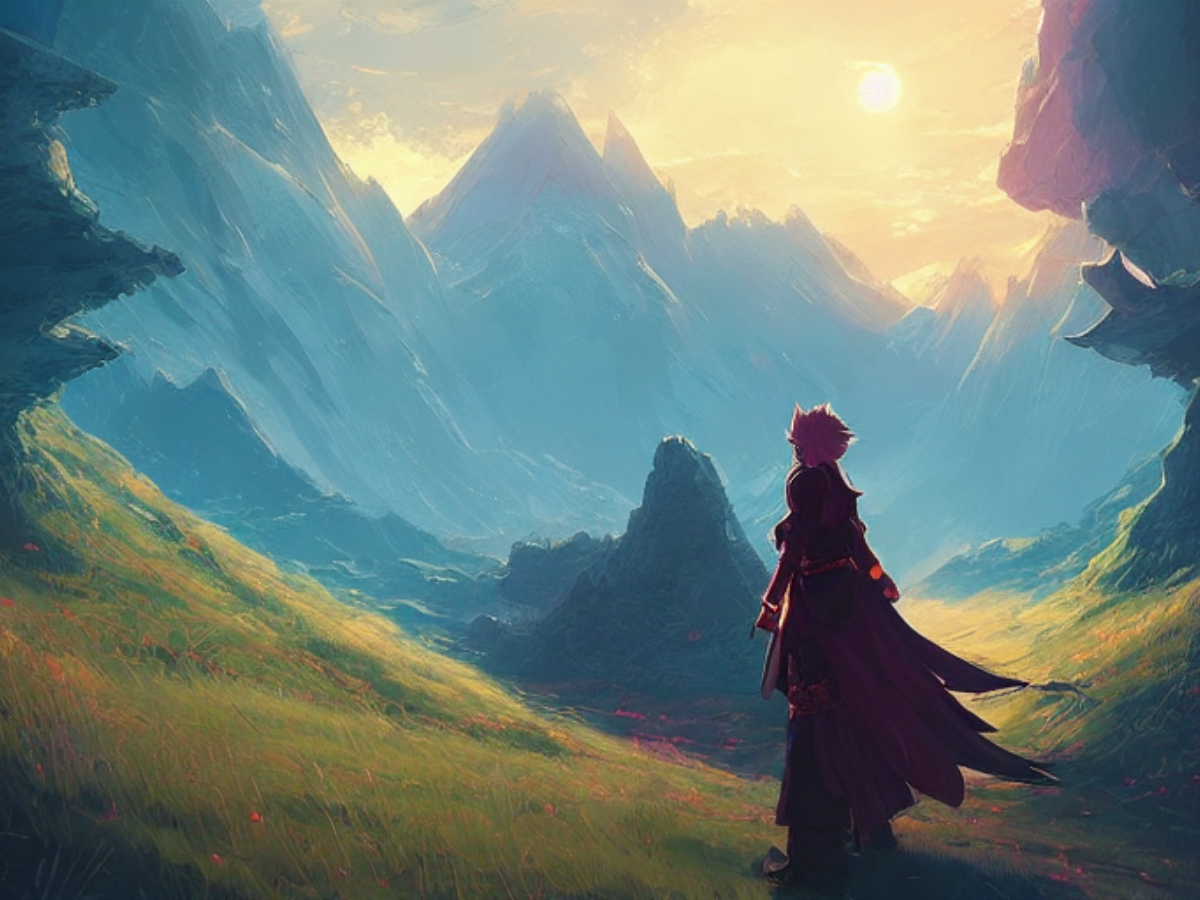
How to Write a D&D Campaign – Final Notes
So much goes into writing a D&D campaign that players will love. It really isn't any single thing that makes a campaign great. If you follow the tips provided above, you're certain to at least get really close to having a fantastic campaign. Use the following tips, as well, as additional help. Think of this category as something like a more advanced series of items to implement once you have the basics mastered.
You Don't Always Need Humble Beginnings
One of the most important things to remember when writing a D&D campaign is that you don't have to start small. Many adventures, for example, start in a tavern. That's small. It's ok to instead make your first adventure as grandiose and epic as possible. You can even start the campaign at a higher level, instead of going from Level 1.
It’s About the Journey, Not the Destination
When writing your D&D campaign, it’s essential to keep the journey in mind, not the destination. Your players should feel like they’re on an epic quest, with danger and adventure around every corner. They should definitely feel like they're driving their character's journey. And most importantly, make sure everyone's having fun! Don't worry about having the "perfect" encounter, adventure, or storyline. Let things unfold, organically.
Secrets and Plot Twists
Whatever the players think is happening, consider how you could create a twist in the plot. Obviously, you have to come up with a story that makes sense as to why the players would think they know what's happening. However, the story also has to have room in it to make it so that what seems to be true simply is not. Don't overdo things when it comes to secrets and plot twists. However, if you can tastefully implement this story device into your campaign at key moments, you'll drastically increase player investment.
Think About Rewards and Consequences
Every action your players take should have consequences, whether they’re good or bad. This will make the story more believable and help your players feel like their choices matter. For example, if your heroes steal from a local merchant, they should expect to be chased by the guard. If they manage to get away, they’ll have to find a way to spend the stolen goods before it’s too late.
Consequences also create a sense of risk and reward. If your heroes know that there’s a chance they could get caught, they’ll be more cautious about their actions. This adds an element of suspense to the story and keeps your players on their toes. Punishments and rewards don’t have to be complex. They can be as simple as losing or gaining favor with the local lord, or NPCs. But whatever you choose, make sure that consequences are appropriate for the action taken.
For example, if your heroes kill a dragon, they should receive a hefty reward. But if they simply slay a rat, the reward should be less substantial. The same goes for punishments. If your heroes make a mistake that costs them dearly, they should suffer the consequences. But if they simply take a wrong turn, the penalty shouldn’t be too severe.
You also need to be consistent with your rewards and punishments. If you’re too lenient, your players will take advantage of it and start making reckless decisions. On the other hand, if you’re too harsh, your players will become frustrated and give up. Finding a balance that works for you and your group is essential.
Moments of Vengeance
Every action in your campaign has consequences. Sometimes, that consequence will be resolved by an act of vengeance on the part of someone that the party harmed. As above, if your party kills a dragon, there may be another dragon who wants vengeance for the act. Or perhaps a wizard wants vengeance as the dragon was his ally.
If you use the idea of consequences and vengeance in your campaign, it's nearly impossible for a campaign to ever actually end. Human nature is such that every action leads simply to more possibilities and actions that spawn as a result. Use that in your campaign and you should have an endless string of related concepts that will give you ideas for ongoing adventures, and keep your campaign's central theme intimately cohesive.
Play a Game Where Everyone Contributes to the Story
As a final tip, try involving your players as much as possible in your world creation and campaign story creation. No matter how good your ideas are when it comes to writing a D&D campaign, I almost guarantee you that your entire gaming group, together, can come up with better ideas.
There are games out there such as the Eternity TTRPG Roleplay Game where every player contributes to the campaign's overall story. Basically, everyone shares at least a little part of the dungeon master role. The result is that each campaign is entirely unique, far more interesting that you can imagine, and comes loaded with an immense amount of creative ideas for your game.
Try it out! The Eternity TTRPG core rulebook comes with everything you need to create your next great tabletop gaming experience.
Dice, Dungeons, Games & More - Eternity TTRPG
Share This Article

Author - Jacob Tegtman
Dear reader, I hope you enjoyed this article. Tabletop gaming has been a passion of mine since I was 6 years old. I've played just about every game from Dungeons and Dragons to video games like Final Fantasy. These games have inspired me, made me laugh, made me cry, and brought me endless hours of enjoyment.
I started Eternity TTRPG - and the indie tabletop game that goes along with it (Eternity Shop) - to share my love of gaming with others. I believe that in our technology-driven age, tabletop games help bring a sense of magic and community back into our world.
If you love the site, please share it with others! I have lots of gaming-related material for you to peruse and use in your own gaming sessions. If you have any questions about the site or want to contribute, just send me a message using the "Contact" page, which you can find in the site's footer.
